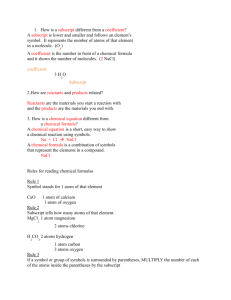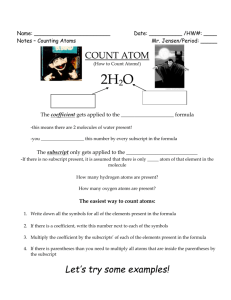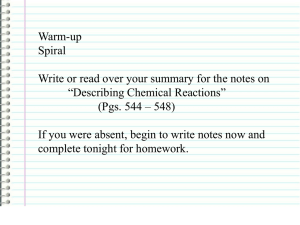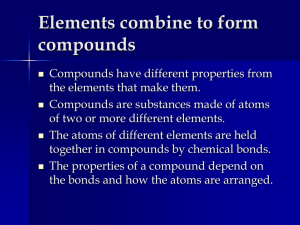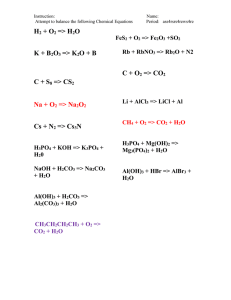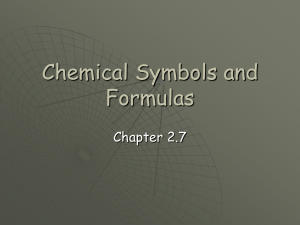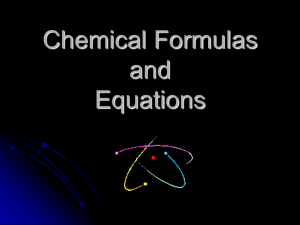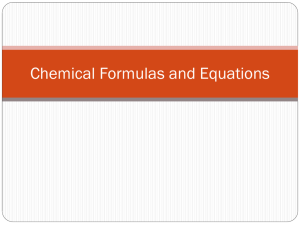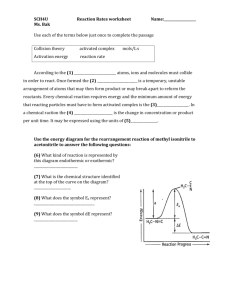Chemical Formulas
advertisement
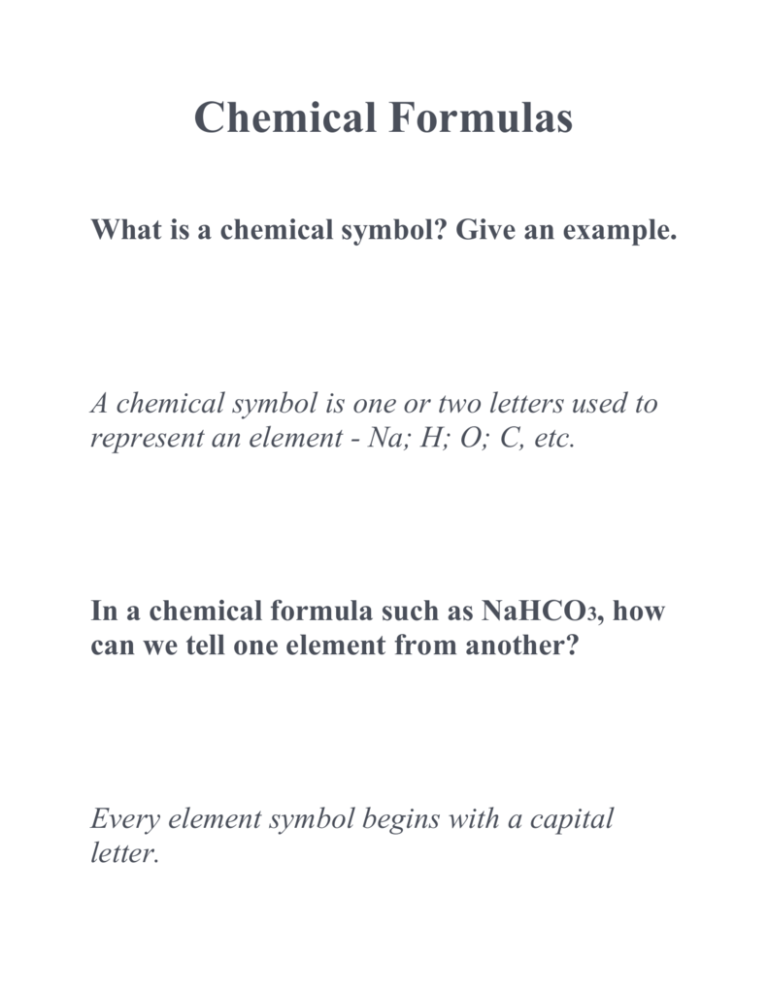
Chemical Formulas What is a chemical symbol? Give an example. A chemical symbol is one or two letters used to represent an element - Na; H; O; C, etc. In a chemical formula such as NaHCO3, how can we tell one element from another? Every element symbol begins with a capital letter. What is a subscript? Give an example. A subscript is a small number to the right of a symbol that is written below the normal line of letters to show how many atoms of an element are present in a substance. No subscript means there is only one atom present. H2O two atoms of hydrogen; one atom of oxygen. What is a coefficient? Give an example. A coefficient is a number written in front of a chemical formula to show how many molecules of that substance are present - 4H2O; four molecules of H2O are present. What is a chemical formula? Give an example. A chemical formula is a combination of symbols and numbers that represent the number and types of elements (atoms) present in compound. NaHCO3; There is one atom of sodium, one atom of hydrogen, one atom of carbon, and three atoms of oxygen. What is a chemical equation? Give an example. A chemical equation uses chemical formulas and symbols to represent what happens in a chemical reaction. MgSO4 + 2NH4OH (NH4)2SO4 + Mg(OH)2 When the reactants are mixed together, they yield (produce) the product which is a new substance with different properties from the reactants.
